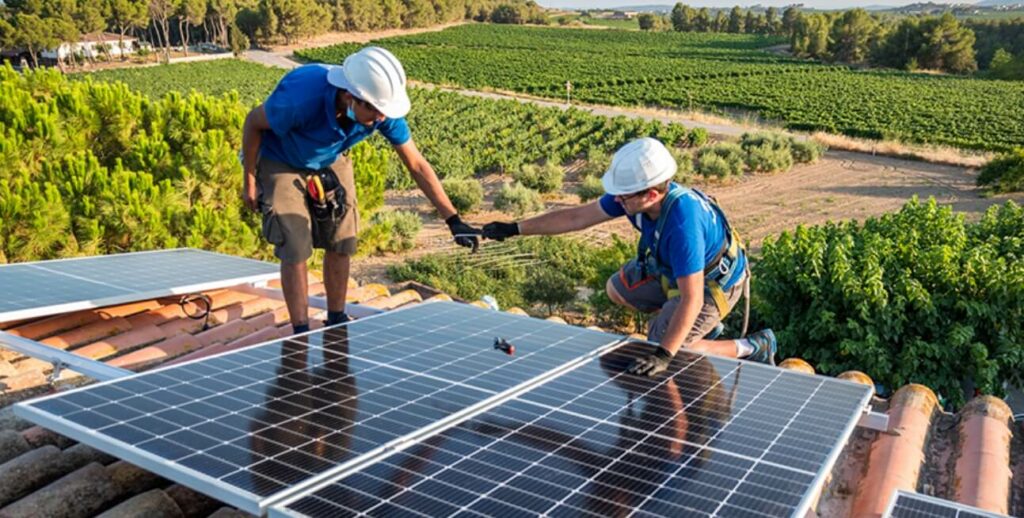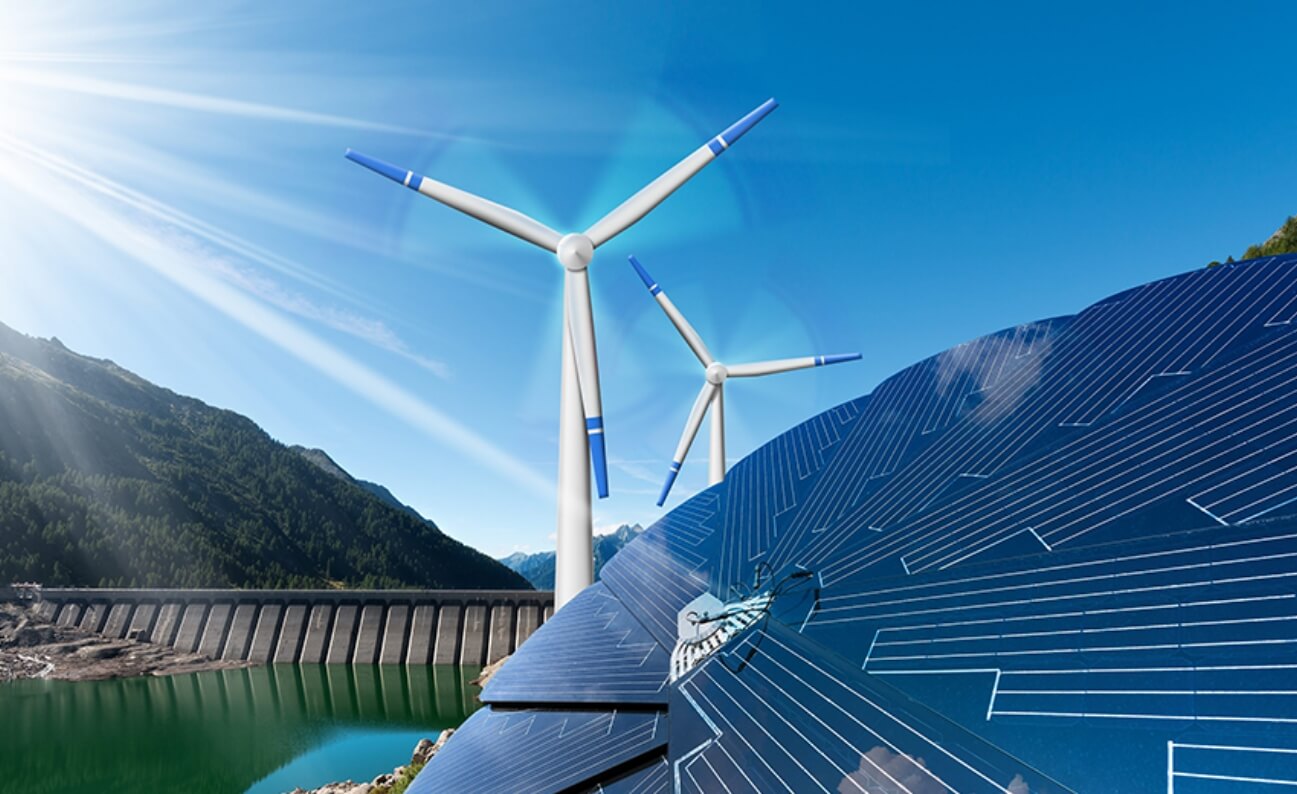A hybrid solar power plant combines both on-grid and off-grid solar power systems. It integrates solar panels, batteries, and a connection to the electrical grid, providing the benefits of both systems. This setup allows for energy independence and reliability, with the ability to store excess solar energy in batteries and use grid power when needed.
Components of a Hybrid Solar Power Plant
- Solar Panels (Photovoltaic Modules):
- Convert sunlight into direct current (DC) electricity.
- Types include monocrystalline, polycrystalline, and thin-film.
- Inverter/Charger:
- Converts the DC electricity generated by the solar panels and stored in the batteries into alternating current (AC) electricity for use.
- Can handle bidirectional power flow (to and from the grid and battery).
- Types include hybrid inverters that integrate both solar and battery functions.
- Battery Bank:
- Stores excess DC electricity generated by the solar panels.
- Types include lead-acid (flooded, AGM, gel) and lithium-ion batteries.
- Charge Controller:
- Manages the flow of electricity from the solar panels to the battery bank.
- Prevents overcharging and protects the battery.
- Types include PWM (Pulse Width Modulation) and MPPT (Maximum Power Point Tracking).
- Grid Connection:
- Allows the system to draw power from and feed excess power into the electrical grid.
- Enables net metering or feed-in tariff arrangements with utility companies.
- Backup Generator (Optional):
- Provides additional power during extended periods of low sunlight or high energy demand.
- Typically powered by diesel, gasoline, or propane.
- Mounting Structure:
- Supports and positions solar panels for optimal sunlight exposure.
- Can be ground-mounted or roof-mounted.
How It Works
- Solar Panels Generate DC Electricity:
- Solar panels absorb sunlight and convert it into DC electricity.
- Charge Controller Manages Energy Flow:
- The charge controller regulates the flow of electricity from the solar panels to the battery bank, ensuring efficient and safe charging.
- Battery Bank Stores Excess Energy:
- The battery bank stores excess DC electricity generated by the solar panels for later use.
- Stored energy is used during periods of low sunlight or high energy demand.
- Inverter Converts DC to AC:
- The inverter converts DC electricity from the solar panels and batteries into AC electricity for use in household appliances and feeding into the grid.
- Grid Connection:
- When solar generation exceeds demand, surplus electricity is fed into the grid, earning credits or payments through net metering or feed-in tariffs.
- When solar generation is insufficient, the system draws power from the grid to meet energy needs.
- Backup Generator (if installed):
- Provides additional power in case of prolonged low sunlight or during grid outages.
Advantages of Hybrid Solar Power Plants

- Energy Independence:
- Combines the benefits of on-grid and off-grid systems, providing continuous power supply even during grid outages.
- Reduces reliance on the grid and ensures energy availability in remote locations.
- Cost Savings:
- Reduces electricity bills by using solar power and storing excess energy.
- Potential to earn credits or payments for surplus electricity fed into the grid.
- Environmental Benefits:
- Promotes the use of renewable energy, reducing carbon footprint.
- Decreases reliance on fossil fuels.
- Flexibility and Reliability:
- Provides a reliable power supply by combining solar power, battery storage, and grid connection.
- Suitable for a wide range of applications, including residential, commercial, and industrial.
Considerations
Steps to Implement a Hybrid Solar Power Plant
- System Sizing and Design:
- Requires careful sizing and design to balance solar generation, battery storage, and grid interaction.
- Oversizing can lead to unnecessary costs, while undersizing can result in insufficient power supply.
- Initial Investment:
- Higher upfront costs due to the need for batteries, inverters, and other additional components.
- Financial incentives and rebates can help offset initial costs.
- Maintenance:
- Batteries require regular maintenance and eventual replacement.
- System components should be monitored and maintained to ensure optimal performance.
- Energy Management:
- Users need to manage their energy consumption to optimize the use of stored solar power.
- Implementing energy-efficient appliances and practices can help extend battery life and system performance.

- Site Assessment:
- Evaluate the site for solar potential, shading, and space availability.
- Energy Needs Analysis:
- Assess energy consumption patterns and requirements.
- Determine the necessary capacity of the solar panels, battery bank, and inverter.
- System Design:
- Design the system based on energy needs, budget, and site conditions.
- Select appropriate components (panels, charge controller, batteries, inverter).
- Permitting and Approvals:
- Obtain necessary permits and approvals from local authorities and utility companies.
- Installation:
- Install solar panels, charge controller, batteries, inverter, and other components.
- Ensure proper wiring, grounding, and safety measures.
- Commissioning and Monitoring:
- Test and commission the system to ensure proper operation.
- Implement monitoring systems to track performance and maintenance needs.
By investing in a hybrid solar power plant, individuals and organizations can achieve a reliable, cost-effective, and environmentally friendly energy solution that combines the best of both on-grid and off-grid systems.










Wp-energiso
May 10, 2023Um mit dem Freischalten, Bearbeiten und Löschen von Kommentaren zu beginnen, besuche bitte die Kommentare-Ansicht im Dashboard.
Die Avatare der Kommentatoren kommen von Gravatar.